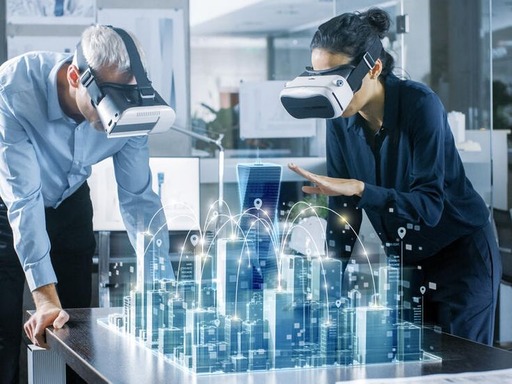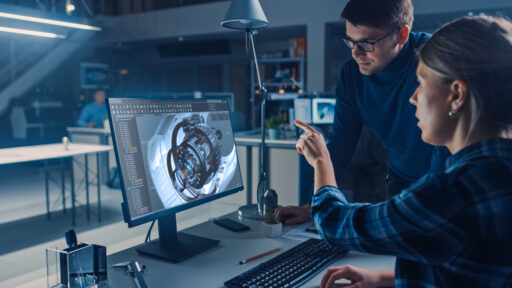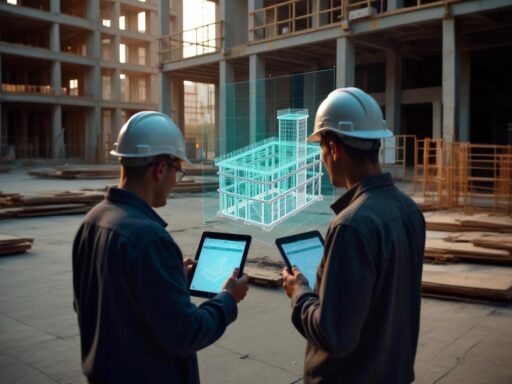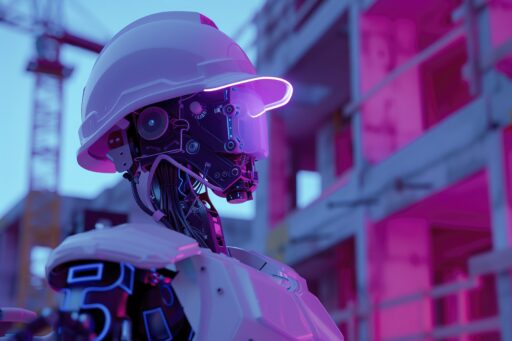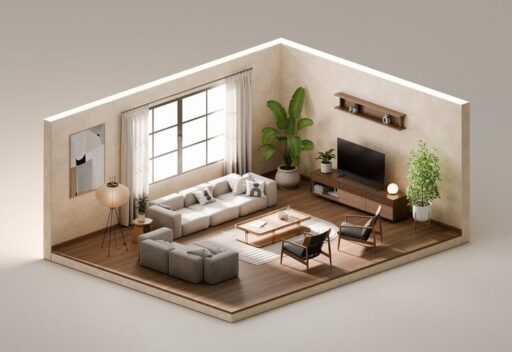In recent years, Augmented Reality (AR) and Virtual Reality (VR) have emerged as transformative tools in the engineering sector. These advanced technologies are reshaping how engineering projects are conceived, developed, and executed. By providing immersive and interactive experiences, AR and VR significantly enhance efficiency, creativity, and safety.
AR and VR are not just buzzwords, they are practical tools that engineers are leveraging to revolutionize project workflows. The benefits of AR and VR extend across various stages of engineering, from design to execution. These technologies help create virtual environments that simulate real-world conditions, empowering engineers to make informed decisions. In engineering projects, AR helps superimpose digital elements onto physical environments, while VR allows users to experience entirely virtual models. Together, they offer unparalleled innovation and efficiency. Let’s delve into the specific benefits of AR and VR in engineering projects in 2025.
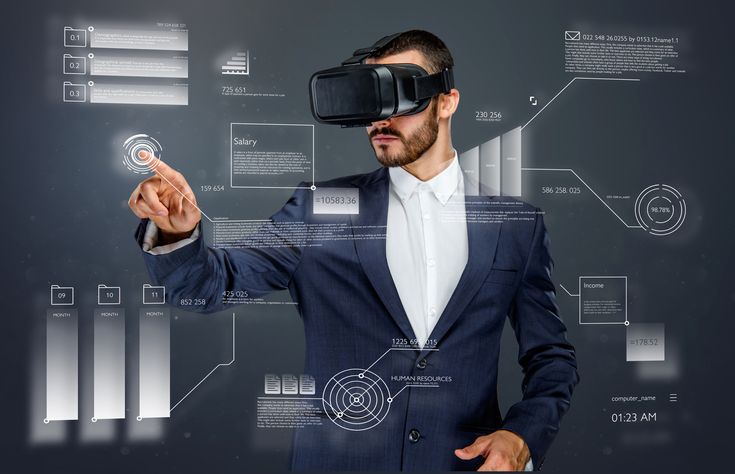
Enhanced Design Visualization
One of the most significant contributions of AR/VR technologies is the ability to visualize projects in a lifelike, immersive manner. Engineers can examine and manipulate designs in a virtual engineering planning environment, ensuring every detail is precise. Whether it’s a skyscraper or a complex machine, AR and VR provide a 3D visualization, eliminating the need for paper-based blueprints and enhancing design accuracy. This leads to fewer design errors and better project outcomes.
Improved Collaboration and Communication
Engineering projects often involve diverse teams spread across multiple locations. With AR VR tools, teams can collaborate in real time, irrespective of geographical boundaries. These tools facilitate remote collaboration, enabling engineers to share updates, discuss issues, and brainstorm solutions in virtual environments. Enhanced team collaboration through real-time project communication ensures that all stakeholders are on the same page, improving overall project efficiency and decision-making.
Streamlined Prototyping and Testing
Building physical prototypes can be costly and time-consuming, but AR/VR testing simplifies this process. By creating virtual prototypes, engineers can test designs in a virtual environment, identifying potential flaws or inefficiencies early in the development phase. This approach enhances the detection of errors, reducing the need for multiple iterations of physical models. It not only saves resources but also accelerates the time to market for new engineering solutions.
Enhanced Training and Safety
Safety is a critical concern in engineering, and AR/VR technologies are making significant strides in this area. With training modules powered by AR and VR, engineers can practice complex procedures in a risk-free virtual setting. These modules simulate real-world challenges and incorporate virtual safety protocols, ensuring that engineers are well-prepared to handle workplace challenges. This proactive approach also improves workplace safety standards by reducing accidents and ensuring compliance with safety regulations.
Cost and Time Efficiency
Engineering projects often face challenges related to time and cost overruns. AR and VR address these issues by offering tools like AR overlays and real-time collaboration tools that streamline workflows. For example, engineers can identify inefficiencies during the design phase, reducing material waste and ensuring project cost savings. Additionally, AR and VR accelerate project timelines by enabling quicker approvals and better coordination, ensuring projects are delivered on time and within budget.
Predictive Maintenance and Real-Time Monitoring
Maintaining complex engineering systems can be challenging, but AR and VR simplify this process with real-time system monitoring tools. Engineers can use augmented reality dashboards and AR wearables to visualize system performance and detect anomalies before they escalate into major issues. This approach reduces downtime and maintenance costs, ensuring smooth operations and extending the lifespan of engineering systems.
Competitive Advantage for Businesses
In a competitive market, adopting innovative engineering solutions like AR and VR sets businesses apart. These technologies help companies deliver high-quality projects more efficiently, improving client satisfaction. Businesses that embrace AR and VR gain a significant edge by showcasing their commitment to cutting-edge solutions, attracting more clients, and retaining existing ones.
Conclusion
The integration of AR and VR in engineering projects is no longer a futuristic vision, it’s a reality that is transforming the industry in 2025. From improved design visualization to real-time monitoring, the benefits of AR and VR are vast and impactful. These technologies are not just tools; they are essential skills for engineers of the future.
If you’re interested in exploring the potential of AR and VR, here’s an opportunity you shouldn’t miss. By registering in CADD Quest 2025 for any course, you’ll receive a complimentary AR VR course that equips you with the skills to leverage these groundbreaking technologies in your engineering projects.
CADD Quest 2025
CADD Quest 2025: The Ultimate Scholarship Fest!
Exciting news for engineering students! CADD Quest 2025 is here, offering up to 40% off on course fees. By registering, you also enter a bi-weekly lucky draw where you can win laptops, digipads, and mobiles. Plus, every participant gets our AR/VR course as a complimentary bonus.
The bumper prize? A fully paid trip to Dubai for one lucky winner!
Ready to take your engineering career to the next level? Visit our CADD Centre website to learn more and register today!
Images by shutterstock and Pinterest
FAQs
How do AR and VR improve design visualization in engineering?
These technologies allow engineers to interact with 3D models in a virtual environment, providing a comprehensive understanding of the design. This leads to better accuracy, fewer design flaws, and more efficient project planning.
In what ways do AR and VR contribute to prototyping and testing?
Engineers can create virtual prototypes to test and refine designs without the need for physical models. This accelerates the development process, reduces costs, and allows for rapid iteration based on real-time feedback.
Do AR and VR offer cost savings in construction and engineering?
Absolutely. AR/VR help in project cost reduction by minimizing rework, optimizing materials, and enhancing planning accuracy. These technologies are key in reducing construction errors, preventing delays, and increasing return on investment (ROI).
What skills or tools do engineers need to work with AR and VR?
Engineers should be familiar with tools like Unity 3D, Unreal Engine, AutoCAD AR plugins, and VR simulation platforms. Learning through AR/VR engineering courses or certifications improves career prospects in future-ready engineering roles.
